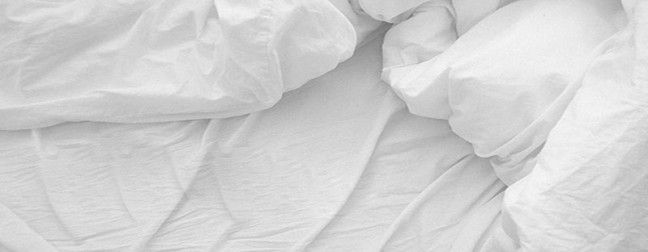How to keep your whites white: the guide to washing linen

White bed linen is a classic accessory for any bedroom – the blank, crisp canvas allows neutral wall colours to come alive and their simplicity radiates style almost effortlessly. We love our selection of egyptian cotton white sheets and duvet covers and during the summer we know most of our customers will be looking at these lighter fabrics and colours to complement the warming air. With this in mind, we have made a How To guide on keeping your white linens as white and fresh as possible through the summer months.
1) Separate colours and fabrics
It is commonly known not to mix black fabrics with whites – but you also need to make sure you’re not including any of your lighter colour fabrics with your white wash. This may not necessarily result in colour transfer, but white fabric is very receptive to any darker ‘fluff’ from the other items which can cause the fabric to lose its bright white.
Be sure to consider the type of fabric your whites are made from too – certain threads and fabrics may require hand washing or cooler temperature washes so carefully read the label beforehand. Cotton and linen can be washed together, acetates and acrylics can also be washed together but wool should be washed separately.

image credit: persil.co.uk
2) Wash them at a high temperature
Whilst you need to be aware of the type of fabric your white linen is made from for adequate washing – the general rule for white fabric is that it should be washed at a temperature of at least 65 degrees, because higher temperatures are the most effective at removing stains and dirt. If you use white bed linen – the high temperature is much more effective at killing germs and bed bugs which is important for allergies.
However, as we already know, wool and similarly delicate fabrics will shrink if laundered at too high a temperature. To ensure your linen retains its original brightness without quality being compromised, add a whitener or brightener to the wash.

image credit: metaefficient.com
3) Pre-treat stains
Bed linen is prone to stains just as much as clothing – we lose up to a litre of sweat whilst we sleep, our skin and hair produce oils and along with skin cells and bed begs our sheets can easily become dirty and even stained. This doesn’t bode well for white fabric as any marks are much more visible and harder to remove.
Ideally, treat the stain as soon as possible as it’s much harder to remove once it drys – however, a good stain removal product should do well depending on what caused the mark. Try washing the fabric on a cold wash- in some instances, hot water can seal in stains making them harder to remove afterward. A handy tip for every day washing; prevent yellowing by simply add half a cup of baking soda to each wash.

image credit: goodhousekeeping.com
Add a comment

